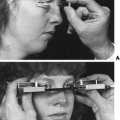HASHIMOTO THYROIDITIS (AUTOIMMUNE THYROIDITIS)
Part of “CHAPTER 46 – THYROIDITIS“
Hashimoto thyroiditis, an autoimmune disorder, is the most common cause of hypothyroidism. It is also referred to as chronic lymphocytic thyroiditis and autoimmune thyroiditis. It occurs in all age groups, but it is most common in middle age.
ETIOLOGY
Numerous features of Hashimoto thyroiditis indicate an autoimmune cause in which multiple genetic factors likely play an important role.14 Because the disorder is much more common in women than in men, the possibility of a gene related to sex-steroid action has been considered.14 Patients with Hashimoto thyroiditis are characterized by the presence of circulating antibodies to microsomal and thyroglobulin antigens, often present in high titer. The disorder occurs frequently in certain families, particularly among the female members.15 Patients with Hashimoto thyroiditis and their relatives have an increased prevalence of other autoimmune disorders, such as Addison disease, diabetes mellitus, pernicious anemia, and myasthenia gravis—one or more of these may develop over time. The disease is characterized pathologically by infiltration of the thyroid by plasma cells and lymphocytes. Autoimmune thyroiditis resulting in hypothyroidism may represent a spectrum from Hashimoto disease (with a goiter) to atrophic lymphocytic thyroiditis (without a goiter, often called primary myxedema). The variability in these related disorders may reflect the production of different types of antithyroid antibodies. For example, patients with agoitrous autoimmune thyroiditis may have a blocking antibody that inhibits the growth of thyroid tissue induced by TSH.16 This antibody most likely is absent in patients with Hashimoto thyroiditis and a goiter. The antimicrosomal antibodies found in patients with Hashimoto thyroiditis are primarily directed against the thyroid peroxidase (TPO) enzyme. Inhibition of this enzyme by the TPO antibody may be partly responsible for the hypothyroidism seen in these patients.17 In addition, patients with Hashimoto thyroiditis may have antibodies that block TSH-dependent production of cyclic adenosine monophosphate, thus inhibiting thyroid hormone production. In one study,18 it was shown that patients with overt hypothyroidism that is due to Hashimoto thyroiditis have a higher prevalence of TSH-blocking antibodies than patients with subclinical hypothyroidism.
The autoimmune thyroid diseases represent a wide spectrum of immune abnormalities, from Graves thyrotoxicosis, caused by antibodies that stimulate the TSH receptor, to Hashimoto thyroiditis, which results from a complex process of immunologic events leading to impaired thyroid function. Both these autoimmune thyroid diseases share a common pathophysiologic bond: the production of an abnormal thyroid state resulting from an immune process directed against the thyroid gland. Volpé15 suggested that Hashimoto thyroiditis is predominantly a disorder of cell-mediated immunity that is manifested by a genetic defect in the suppressor T-cell function. This theory postulates that as a result of defective suppressor T cells, helper (CD4) T cells are not suppressed appropriately and, therefore, are able to activate and cooperate with certain B lymphocytes. Additionally, the helper T cells produce various cytokines, including interferon-γ, which induce thyrocytes to express major histocompatibility complex class II surface HLA-DR antigens and render them susceptible to immunologic attack. The activated B lymphocytes then produce antibodies that react with thyroid antigens. However, the antimicrosomal (anti-TPO) and antithyroglobulin antibodies used as serologic markers to identify patients with Hashimoto thyroiditis are likely not the direct cause of the thyroid destruction. There is evidence that cytotoxic T lymphocytes show variants in the promoter of antigen 4 (CTLA-4) and represent a risk factor for Hashimoto disease.19 These cells act in concert with complement and killer (or K) lymphocytes to cause lymphocytic thyroiditis. In addition to autoimmune mechanisms of thyroid cell damage, various environmental factors may be involved in the pathogenesis of Hashimoto thyroiditis.19a For example, iodide ingestion may help trigger the development of autoimmune thyroiditis.20 Further, the administration of granulocyte macrophage colony-stimulating factor or interleukin-2 may induce the temporary development of thyroid autoantibodies and reversible hypothyroidism in treated patients.21, 22 This finding suggests that patients receiving hematopoietic growth factors or cytokines should be monitored for the development of autoimmune thyroiditis and hypothyroidism. Apoptosis (programmed cell death) may play a major role in the massive thyrocyte destruction in Hashimoto thyroiditis.23 Cross-linking of the Fas receptor with its ligand (Fas L) induces apoptosis, whereas this process is inhibited by the protooncogene Bc1-2. Immunostaining of Hashimoto tissue shows enhanced expression of Fas and Fas L but diminished Bc1-2 protein in thyroid follicles, effects activated by the cytokine interleukin-1β(IL-1β), which is abundantly produced in a Hashimoto gland.24
Certain HLA tissue types, such as HLA-DR5, are more common in patients with Hashimoto thyroiditis than in the general population (see Chap. 194). Patients with primary myxedema (agoitrous hypothyroidism) have an increased prevalence of DR3 but not the DR5 antigen, suggesting that these autoimmune
thyroid disorders are separate genetic entities.25 Because Graves disease and Hashimoto thyroiditis may coexist in the same patient, it is interesting that in both conditions there is an increased prevalence of HLA-AW30.26 Graves disease, however, is associated with an excess of DR3 (as in primary myxedema) but not the DR5 antigen.27 HLA-DR antigens are not normally expressed on thyroid cells. However, in Hashimoto disease the thyroid follicular cells present these antigens on their surface, which may trigger the autoimmune process.28 There remains, however, considerable debate on the role that the HLA system plays in the pathogenesis of Hashimoto thyroiditis. It has been suggested that the tendency to develop thyroid autoantibodies is inherited as a mendelian dominant trait and not primarily through the HLA-related gene systems.20 In addition, age, sex, and environmental factors (e.g., iodide or viral exposures) may play modifying roles in defining which genetically predisposed patients develop autoimmune thyroiditis.
thyroid disorders are separate genetic entities.25 Because Graves disease and Hashimoto thyroiditis may coexist in the same patient, it is interesting that in both conditions there is an increased prevalence of HLA-AW30.26 Graves disease, however, is associated with an excess of DR3 (as in primary myxedema) but not the DR5 antigen.27 HLA-DR antigens are not normally expressed on thyroid cells. However, in Hashimoto disease the thyroid follicular cells present these antigens on their surface, which may trigger the autoimmune process.28 There remains, however, considerable debate on the role that the HLA system plays in the pathogenesis of Hashimoto thyroiditis. It has been suggested that the tendency to develop thyroid autoantibodies is inherited as a mendelian dominant trait and not primarily through the HLA-related gene systems.20 In addition, age, sex, and environmental factors (e.g., iodide or viral exposures) may play modifying roles in defining which genetically predisposed patients develop autoimmune thyroiditis.
Stay updated, free articles. Join our Telegram channel

Full access? Get Clinical Tree






